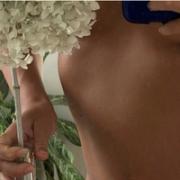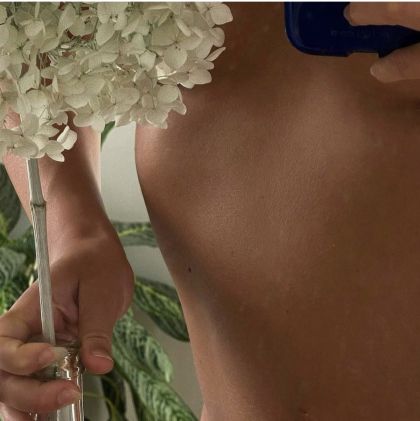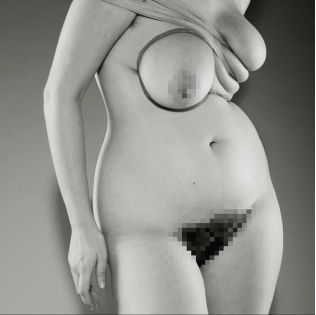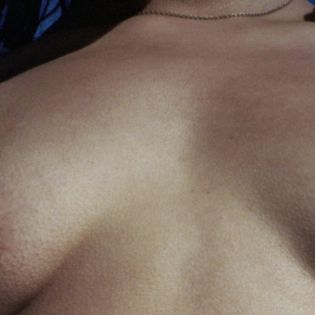Works of Art
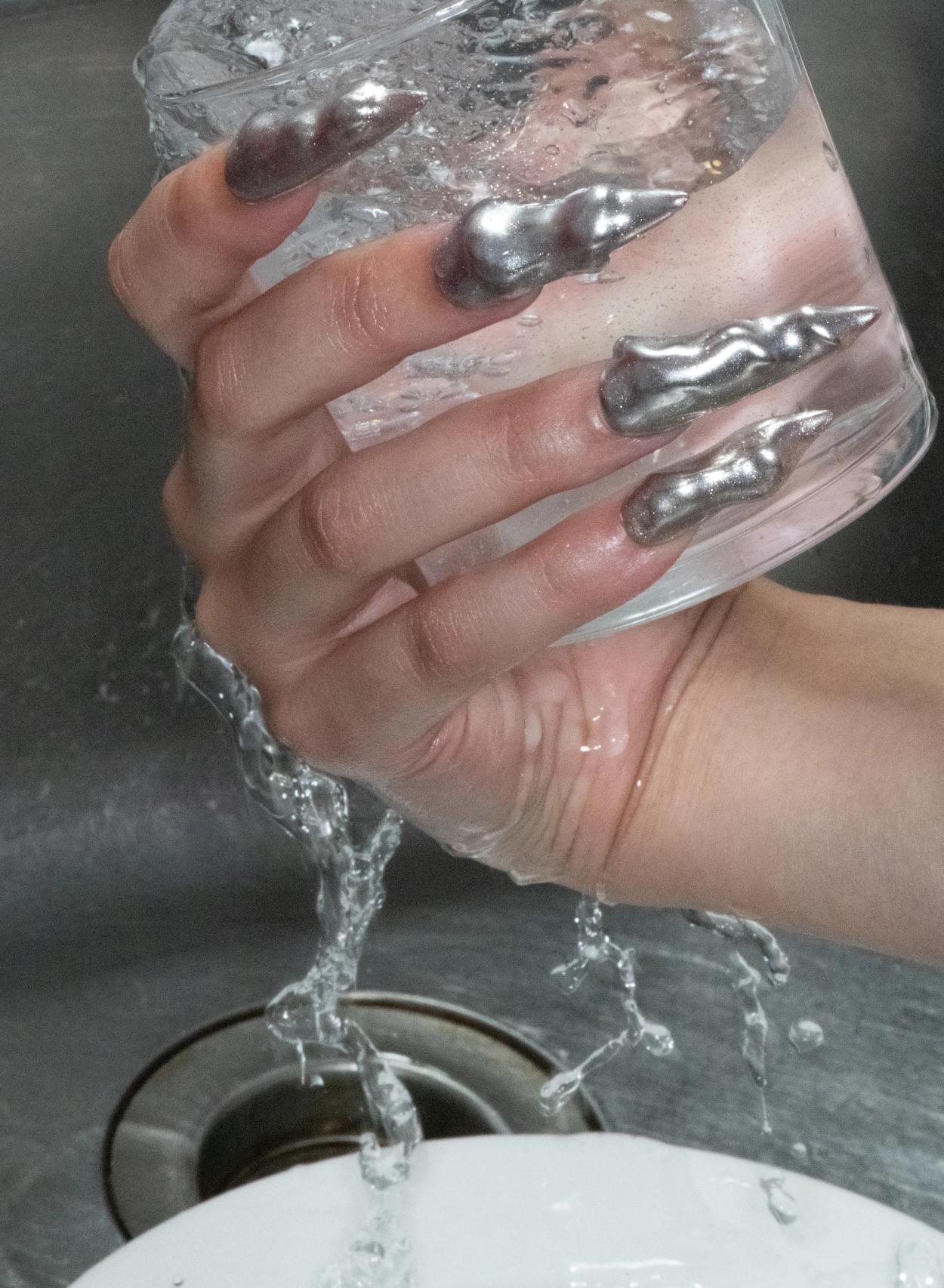
The role of nail art extends beyond the aesthetic in the hands of a new legion of artists pushing the practice into fresh, therapeutic, realms. Kate Lancaster meets one of these trailblazers, and explores the unexpectedly intertwined history of nail art, feminism and pleasure.
‘Oh my God, are those Horni?’ a young woman gasps as she accosts my hands to better inspect my nails. When I reply that yes, my dripping, molten metallic manicure is the product of a recent session at Horni Nails in Melbourne’s Collingwood, she smiles knowingly. ‘Of course,’ she says with a nod, ‘Only Cait would create something like that.’
Among a certain stylish subset of the city’s inner north, ‘Horni’ has quickly become shorthand for audacious, unapologetically expressive manicures: nails designed to drip delicately off the fingers like a trail of water, nails embedded with a proverbial garden of three-dimensional flowers, nails that give the uncanny illusion of crocodile skin.


It’s the brainchild of makeup artist Caitlyn Iskra, whose love for unique, unorthodox nail designs developed in the vivid alleys of Harajuku during a trip to Japan in 2018. ‘I think I spent like $400 on nails while I was there, it was just the way I felt walking around with them. I felt so … hot,’ she recalls. Inspired by the creative freedom employed by those nail artists, but unable to find anything similar in Melbourne, Iskra started designing what she calls ‘crazy nails’ of her own.
After ordering a cheap manicure kit online, Iskra began practising painting nails in front of Grey’s Anatomy for hours on end, before eventually co-opting the talons of willing housemates.
‘I was obsessed! When you’re doing something for eight hours a day, you’re gonna pick it up [quickly],’ she says. ‘One of my roommates just loved whenever I did her nails—especially during lockdown, when people were missing those beauty rituals and really struggling to feel good.’
Sharing her efforts on her personal Instagram led Iskra to start her own dedicated nail-art page, which she dubbed Horni Nails.
‘Horny was a word I used all the time, but it’s never been necessarily sexual. It’s more about a confidence, an emotion, an attitude—it’s like no limits,’ she explains. ‘We’re sex positive, but I didn’t necessarily want to associate it with porn or even sex, which is why I changed it from a ‘y’ to an ‘i’.’
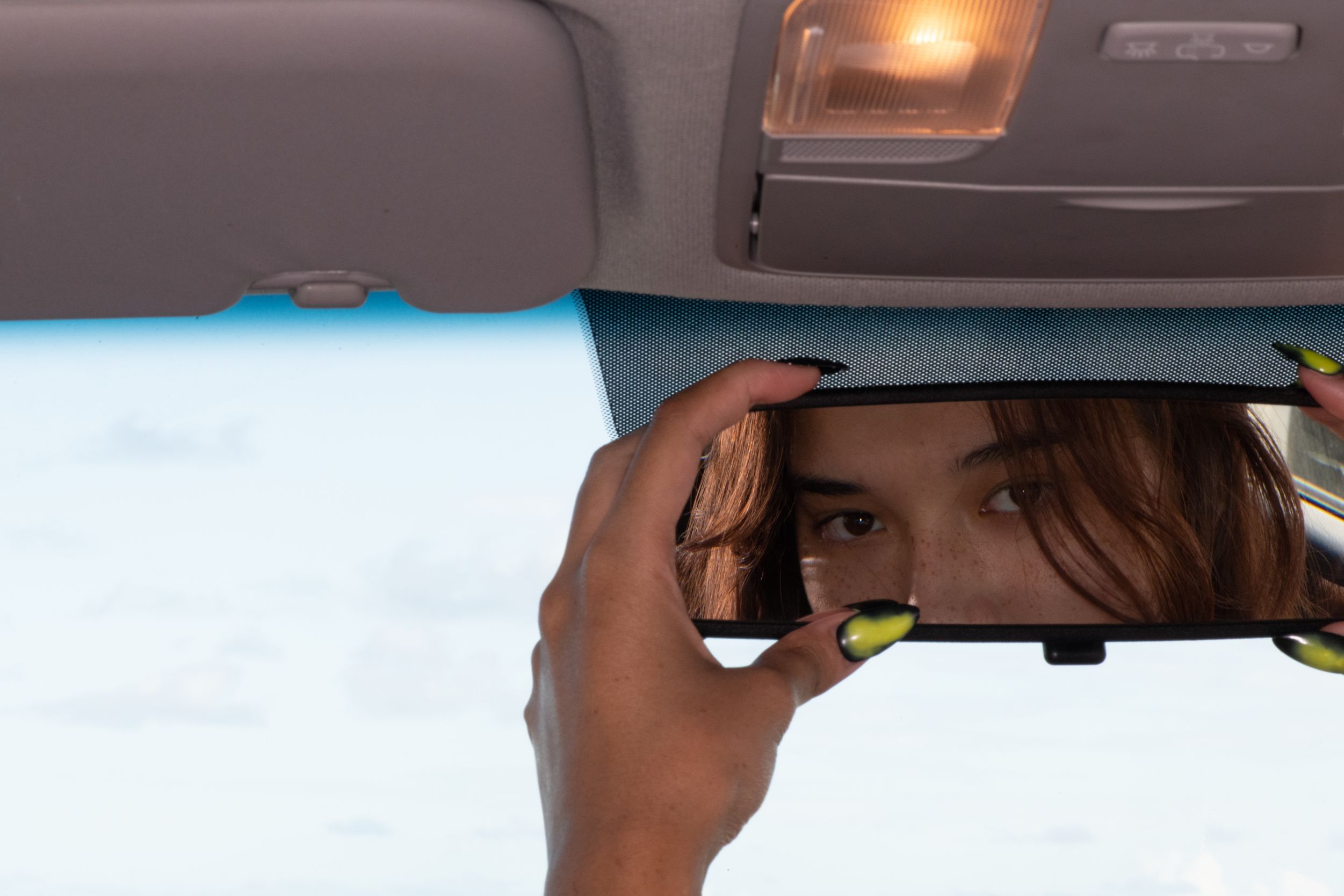
By the time businesses were permitted to reopen post-lockdown, Iskra’s Horni Nails page had garnered something of a cult following. When it was announced that restrictions on salons would be lifted, Iskra awoke to a deluge of DMs from prospective clients hoping to lock in an appointment. ‘The designs I was doing, people in my perimeter hadn’t seen [them] before, so it kind of created that community here in Melbourne,’ she says.
Iskra’s clients are quick to notice that her signature manicures offer a kind of therapy beyond the aesthetic. You feel different when you leave her salon. ‘I grew up with my mum being a reiki healer, where you’re using your hands to help people, which is definitely something I translate into my sessions,’ she says. ‘My intention whenever I’m holding people’s hands is that I want them to feel safe, so they can just feel good about themselves.’
Iskra also parlays her interest in chromotherapy—the practice of using colour to adjust the body’s vibrations and energy—into her nail work. ‘Colour has its own language, and in my intuition I can understand what a colour might mean to someone. It’s kind of like a little psychic reading when you get your nails done,’ she says. ‘If you look at your hand and see a colour you love, it’s gonna make you feel something, whether you’re aware of it or not.’
Molly Shears, a multi-hyphenate creative and Horni Nails client, agrees that her sessions with Iskra offer more than a standard beauty appointment. ‘I look forward to my time with Cait for reasons far beyond the nails,’ she says. ‘We find ourselves talking through the creative blocks in life. When I leave, I feel like I have just entered another zone, like I can embrace any sort of energy shift that’s around the corner.’
Nails have acted as a creative canvas for millennia. In Greek mythology, Eros tried to undermine Aphrodite by cutting her nails while she was sleeping, scattering them across the Earth’s beaches. (The legend goes that, because she was a goddess, the clippings turned into semi-precious onyx). Archaeologists have unearthed the tombs of ancient Egyptians whose gilded fingernails were still intact. The Babylonians coloured their nails dark with kohl, Indians patterned their nails and fingers with intricate henna. In 3000BC China, royalty wore crimson-red polish to denote their status as part of society’s upper class. (The modern version, a shellac manicure in OPI’s Big Apple Red, is still a status symbol to a certain set of inner-city-dwelling 20-somethings.)
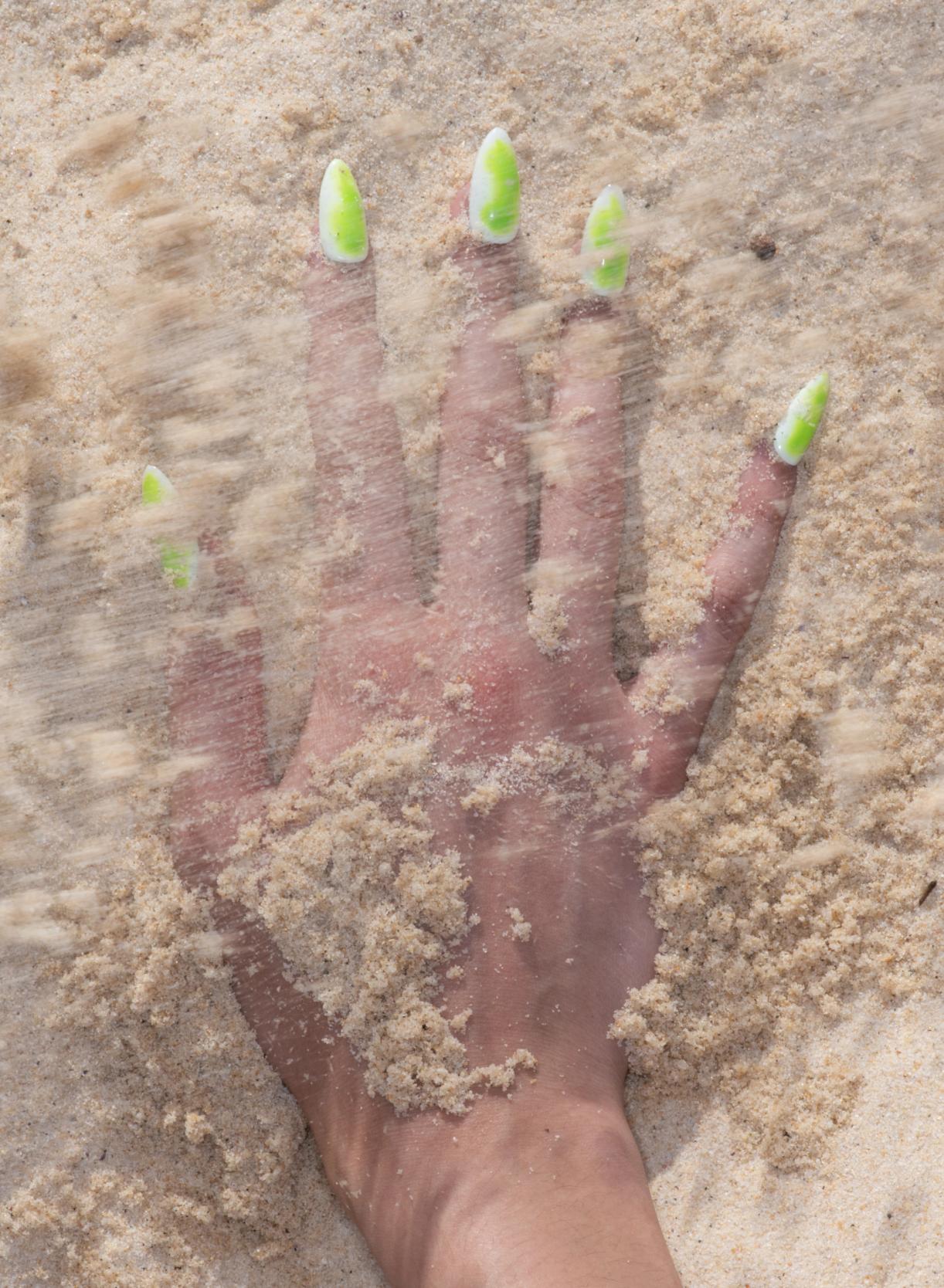
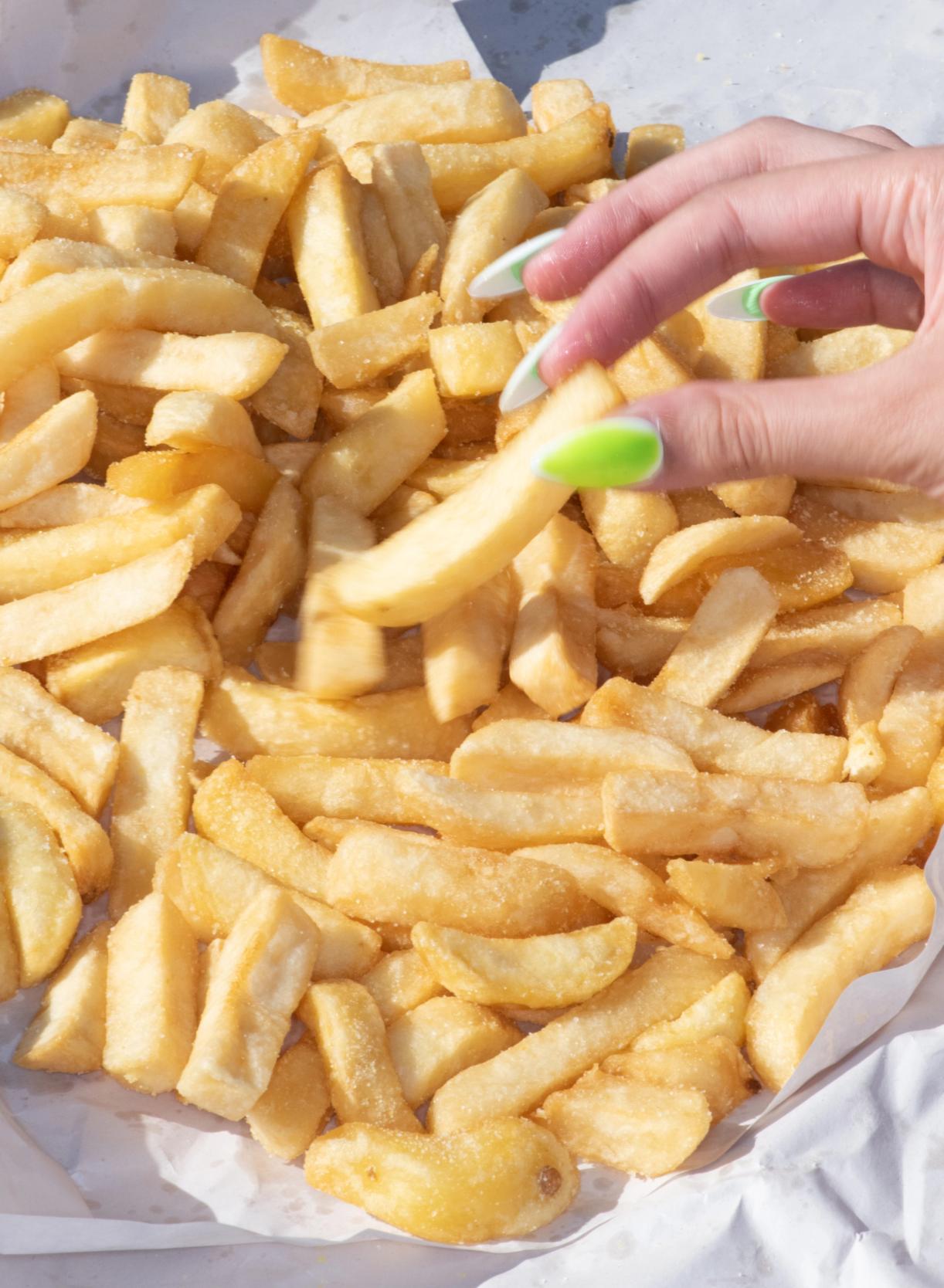
Nails may seem inconsequential, but their history is loaded with unexpectedly prescient cultural and political questions. In the ’70s, Lou Reed’s decision to wear black nail polish was a pioneering moment in the expression of gender fluidity (more recently, Harry Styles has built on this tradition with his genderless beauty and nail polish brand, Pleasing). Two decades later, Uma Thurman’s Chanel Vamp manicure in Pulp Fiction caused a cascade of global sales as the film became an international sensation. In that same decade, Missy Elliott and Lil’ Kim wore unapologetically OTT nails by nail artists (note the term ‘artist’) like Bernadette Thompson. The famous ‘money manicure’ Thompson created for Lil’ Kim, inspired by the music video for Get Money in the mid-’90s, ended up on display at the Museum of Modern Art in New York City.
Questions about the ‘respectability’ of nail art are frequently loaded, often revealing society’s undercurrent of misogynoir. As the beauty journalist Funmi Futto wrote in The Guardian in 2021, ‘Black women have been repeatedly stigmatised for nail art’. She references the New York Times Magazine writer Nikole Hannah-Jones, who in 2016 was singled out by a prominent white male journalist at a prestigious conference who asked, among other condescending questions, if she was going to leave to ‘get her nails done’. The Olympic athlete Florence Griffith Joyner was met with similarly undermining questions about her (admittedly fab) acrylic nail art when she won multiple gold medals.
Caitlin Iskra believes our relationship to our nails goes deeper than modern beauty standards. This is perhaps why she remains drawn to more eccentric designs, including nails characterised by eye-catching textural blobs, chunky chains and unusual shapes. ‘They’re ugly—you can say it!” she jokes, but it’s this imaginative approach to nails that has become the Horni brand. But it’s not just Iskra’s clients—who range from sex workers and yoga instructors to artists and lawyers—venturing into a more brazen space when it comes to their nails. Call it a symptom of fashion’s recent revival of the gaudy early noughties, but there’s never been more celebrity hands clad with dexterity-defying manicures on the red carpet—just ask Cardi B, Megan Thee Stallion or Dua Lipa.
‘There’s so much perfectionism in the western world, where things need to always look ‘pretty’,’ says Iskra. ‘I love the Japanese philosophy of wabi-sabi, which is about finding perfection in imperfection. That’s definitely how I view my work; I don’t see boundaries, I just let things be what they want to be.’
Post-pandemic, we’re also starting to view beauty-related upkeep as more than just maintenance. There’s a sense that investing in cherished beauty rituals has become less tied to vanity; instead, we’re increasingly using such practices as tools for self love, creative expression and empowerment. ‘As women, specifically, we’ve been conditioned to be a bit more shy and reserved—we’re not conditioned to feel sexy and confident. So to be able to be in that space, where it’s like, ‘I know I feel good, and I want to feel good’, is so healing for this generation. If I can hold space for someone to feel amazing, I will do that,’ says Iskra. ‘It’s about feeling.’
For Ashlee Jeffery, a masseuse and artist, her regular appointments at Horni Nails are an organic extension of her creative vision. ‘It’s like collaborating on an art piece. For the next month they’re on my hands while I hold a flower or a glass, give a massage or change my bed sheets,’ she says. ‘When my hands feel pretty, I romanticise the little rituals I do with them even more—they feel inspiring.”
Ultimately, Iskra hopes to evolve the Horni ethos beyond just nails and into a movement that encourages confidence and collaboration in creativity. ‘I want to open a space where people can come and learn photography, or styling, as a Horni community,’ she says. But nails will always be a focus. As Iskra points out, our hands are hard to ignore. ‘Hands have always been my favourite thing about the body. They look strong, they look feminine, they look masculine, they can be delicate, they can be rough—but there’s no gender associated with hands,’ she says. ‘People forget how much they use their hands, so why not put art on something that you use every day?’
